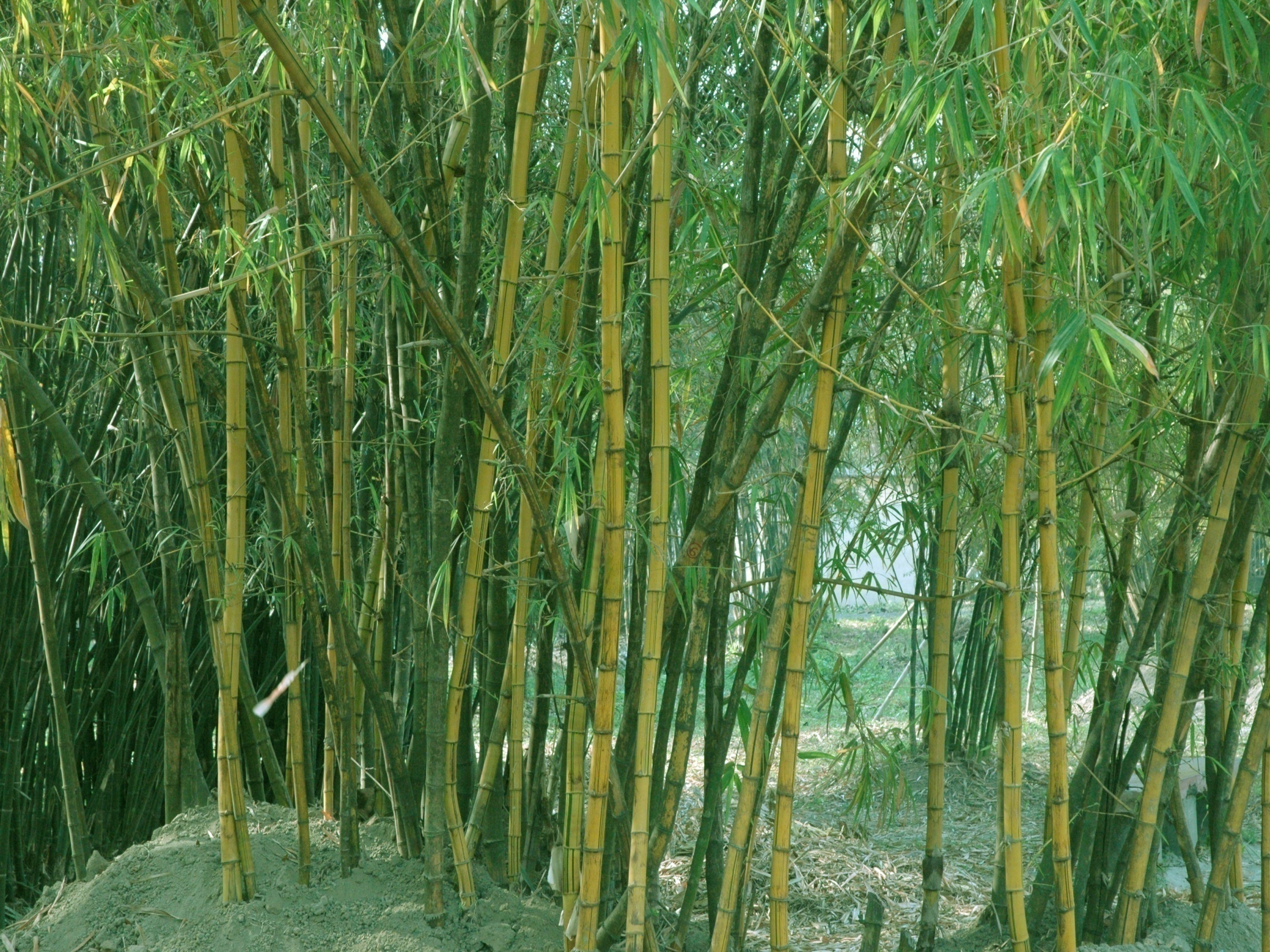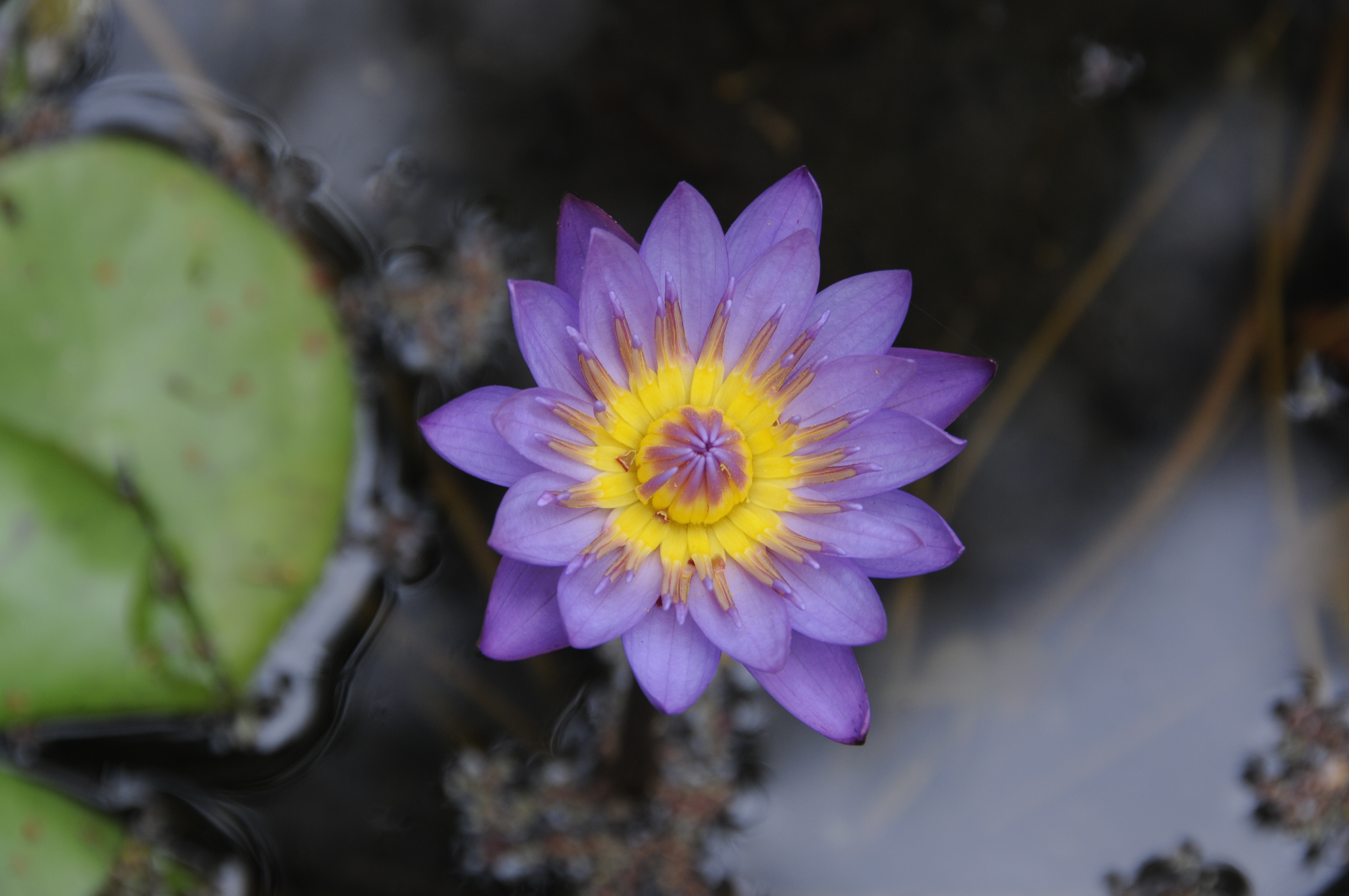AROMATIC PLANT GARDEN
This section is a newly developing section of the garden exclusively meant for the aromatic plants of India. Developed on a 3000 sq. ft. area in Division No. 20 near the Rest House has already has more than 30 aromatic plant species including the All Spice Plant, Lemon grass, Mint, Camphor, Sandal Wood, etc.
BAMBUSETUM
Bambusetum of the garden has a large number of bamboo species collected from different parts of the country. More than 28 species of bamboo are available in the Bambusetum that includes Golden Bamboo, Giant bamboo, Climbing bamboo, Buddha Belly Bamboo, etc.
CACTUS HOUSE
A separate pentagonal glass house for cacti and succulents was built on the occasion of the bicentenary celebration of the garden in 1987 in Division No. 22. This section has a collection of more than 100 species of succulent plants belonging to 10 different families. Several rare varieties of plants are also maintained in this section. Cacti occur in a wide range of shapes and sizes. Most cacti live in habitats subject to at least some drought. Many live in extremely dry environments. Cacti show many adaptations to conserve water. Almost all cacti are succulents, meaning they have thickened, fleshy parts adapted to store water. Unlike many other succulents, the stem is the only part of most cacti where this vital process takes place. Most species of cacti have lost true leaves, retaining only spines, which are highly modified leaves. As well as defending against herbivores, spines help prevent water loss by reducing air flow close to the cactus and providing some shade. In the absence of leaves, enlarged stems carry out photosynthesis.
CANNA SECTION
This section has a collection of different varieties of Canna with a wide range of colour combination and a centre of attraction for the visitors.
CHARAK UDYAN
The Medicinal Plant Section or Charak Udyan is a very important section of this garden that has a collection of more than 200 medicinally important plants arranged in 196 beds that covers most of the plants mentioned in Charak Samhita by Maharshi Charak. This section has an exclusive collection of Coco, Nutmeg, Gurmar, Cocaine, etc. It was opened for students in 1990.
FOLIAGE SECTION
The Foliage sections in Division No. 20 gives beauty to the visitors throughout the year by their nature of attractive and colourful leaves. Apart from these Topiary decorations is being maintained and can be seen in the Polialthia sp., Mussanda sp., etc., Other different foliage plants Codiaeum sp., Dieffenbachia spp., Aralia spp., Euphorbia spp., are also adding beauty to the section. The picturesque beauty of this section attracts lot of visitors as a point of photography.
LARGE PALM HOUSE
The Large Palm House was built in the middle part of 19th Century for planting the interesting Palms and shade loving plants, which is situated in Division No. XVII of the Indian Botanic Garden. The climbers grown over the iron structure of this house are Antigonon leptopus Hook. & Arn. and Porana paniculata Roxb., which provide shade to the planted palms inside. At the center of the house just below the dome grows Lodoicea maldivica (J. F. Gmelin) Persoon – the Double Coconut tree with glorious trunk and crown of large leaves. Indigenous to Seychelles Islands (West Indian Ocean), this palm species was introduced and planted here in 1894. This giant palm survives about 1000 years. It is the largest seed-bearing plant so far described from the Plant Kingdom. The seed looks like two coconut seeds fused together, for which the name stands the ‘Double Coconut’. Other interesting palms planted in this Palm House are namely Areca nagensis Griff. (North East India), Arenga engleri Becc. (Malaysia), Astrocaryum maxicanum Liebm. ex Mart. (Mexico), Bentinckia nicobarica Becc. (Nicobars), Licuala peltata Roxb. ex Buch.-Ham. (Regional Himalaya), Livistona jenkinsiana Griff. (Regional Himalaya), Orbignya cohune (C. Martius) Standley (Hondurus), Rhopaloblaste augusta (Kurz) H. E. Moore (Nicobars), which are now endangered in their natural habitat. The climbing palm Calamus andamanicus Kurz. (Andaman), the bird nest fern Asplenium nidus L. and various shade loving plants including Rhaphidophora dicursiva Scott planted in the Palm House altogether creates an environment that is comparable to a rain forest. Besides these, other notable plants include Cycas circinalis L., C. rumphii Miq., Myristica fragrans Houtt. (Nutmeg) and other plants.
NURSERY
This section maintains a germplasm collection of aquatic plants called Nymphea (Water Lily) and Nelumbo (Lotus). In addition to that, a large number of their varieties and hybrids have also been conserved in the garden viz. August Koch, Blue Triumph, Caerulea, Pamela, etc. are blue flowered. Sioux, Chromatella, yellow flowered. Rose, Arey, General Pershing are odorous pink flowered. Panama pecific, pinkish blue while Escarboucle is vermilion and Omariana is red flowered.
NYMPHEA SECTION
This section maintains a germplasm collection of aquatic plants called Nymphea (Water Lily) and Nelumbo (Lotus). In addition to that, a large number of their varieties and hybrids have also been conserved in the garden viz. August Koch, Blue Triumph, Caerulea, Pamela, etc. are blue flowered. Sioux, Chromatella, yellow flowered. Rose, Arey, General Pershing are odorous pink flowered. Panama pecific, pinkish blue while Escarboucle is vermilion and Omariana is red flowered.
PALMATUM
The AJC Bose Indian Botanic Garden is well known for its native and exotic palms. With about 109 species, this collection is one of the richest palm collections in India. Some of the interesting palms worth mentioning are the Branched Palm, Oil Palm, Century Palm, and many endemic and exotic palms.
PANDANETUM
Pandanus spp. are commonly known as Screw Pines. Collection of are called ‘Pandanetum’. These plants are often confused with palms, but are not at all related to palms. The species vary in size from small shrubs less than 1 m tall, to medium-sized trees 20 m tall, typically with a broad canopy, heavy fruit, and moderate growth rate. The trunk is stout, wide-branching, and ringed with many leaf scars. Several species of Pandanus (common and rare) like Pandanus foetida, P. furcatus, P. leram, P. tectorius, P. anguifer etc. are seen grown here.
PINETUM
The name 'Pinetum' is given to a collection of conifers. Although the conifers grow at higher altitudes but these have been acclimatised in garden environs through long term conservation practise. Many common and rare conifers like Pinus roxburghii, Araucaria, Juniperus in addition to other gymnosperms like Cycas circinalis, C. revoluta, C. rumphii, Agathis robusta and Zamia pallida are conserved in two pinetums in Division No. 4 & 8.
ROSARIUM
An area of approximately 26000 sq. ft of AJCBIBG adjoining to the Great Banyan Tree is converted into rosarium/rose section in 2019. The area is converted into 29 plots or beds; each bed was of more or less 800 sq. ft having a walking path of 2ft made up of brick and sand all around the beds having a central decorated bed harbouring the Indian Breed rose Janaki Ammal. The front side has a running bed of miniature roses 2ft wide and acts as hedge. This newly developed rose section or rosarium is endowed with 2708 number of rose plants growing in the 29 beds and in the front bed. More than 248 cultivars with 16 colour combinations including stripes were also grown. Out of the 29 beds, one bed harbours only Indian breeds and the others are foreign breeds. Some of the notable cultivars are Royal amethyst, Gary player, Swamy Ranganath Nanda, Spell work, Rina Hugo, Holly Wood, Double Delight, Victor Hugo, AK. Mishra, Marcopolo etc. along with number of scented varieties. The rosarium was inaugurated on 12th January 2020 by Ms Henrianne de Briey, the President, World Federation of Rose Societies in presence of Dr. A.A. Mao, Director, Botanical Survey of India and around 250 delegates of World Regional Rose Convention including delegated from different counties and officials of all the local offices of BSI.





